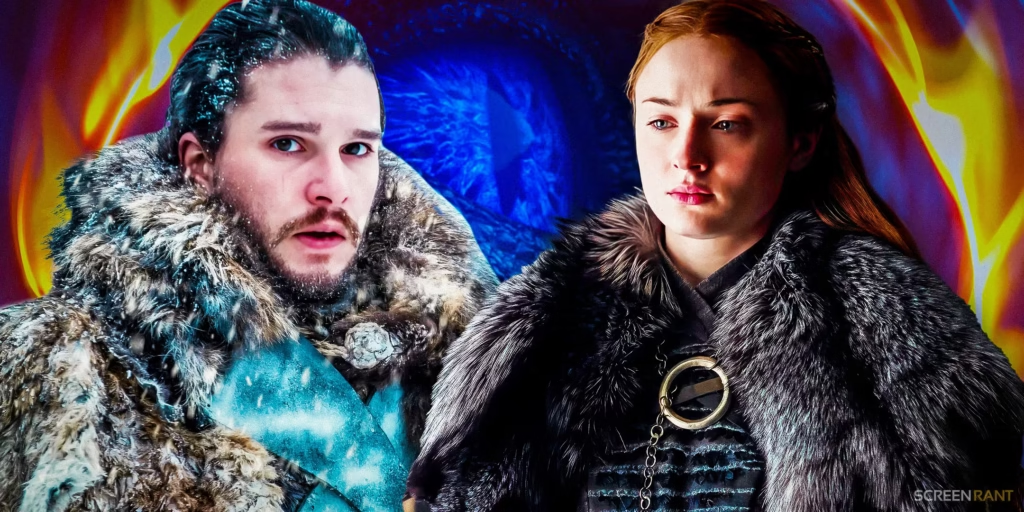
The Rise of High-Resolution Imagery in Modern Entertainment
The entertainment industry has undergone a significant transformation with the advent of high-resolution imagery. Shows like “Game of Thrones” have set new standards for visual storytelling, leveraging advanced camera technology to deliver stunning visuals. The shift to 4K resolution, particularly images sized at 2160×3840, has redefined how audiences experience content. This article explores the impact of high-resolution imagery on fan engagement, using “Game of Thrones” as a case study.
Why “Game of Thrones” Became a Visual Benchmark
“Game of Thrones” is not just a television show; it’s a cultural phenomenon. One of the key factors behind its success is its commitment to visual excellence. The show’s producers invested heavily in high-resolution cameras and post-production techniques to create a cinematic experience. Scenes shot in 2160×3840 resolution capture every detail, from the intricate costumes to the sprawling landscapes of Westeros. This level of detail has made the show a benchmark for visual quality in modern entertainment.
The Role of 2160×3840 Resolution in Immersive Storytelling
High-resolution imagery plays a crucial role in immersive storytelling. In “Game of Thrones,” every frame is meticulously crafted to draw viewers into the world of Westeros. The 2160×3840 resolution allows for unparalleled clarity, making it easier for fans to notice subtle details like the texture of a character’s armor or the expression on their face during a pivotal moment. This level of immersion enhances emotional engagement, making the viewing experience more impactful.
Fan Engagement Through High-Resolution Visuals
Fan engagement is a critical metric for the success of any show, and “Game of Thrones” excels in this area. High-resolution visuals have played a significant role in fostering a dedicated fan base. Fans often pause and zoom into scenes to appreciate the intricate details, leading to increased screen time and deeper emotional connections. The 2160×3840 resolution has also fueled fan theories and discussions, as viewers analyze every frame for hidden clues and Easter eggs.
The Controversy Surrounding Nude Scenes in High Resolution
While high-resolution imagery has many benefits, it also comes with its share of controversies. “Game of Thrones” is known for its explicit content, including nude scenes. The 2160×3840 resolution has sparked debates about privacy and consent, as the level of detail can be intrusive. This section delves into the ethical considerations of using high-resolution cameras for sensitive scenes and how the show’s producers have addressed these concerns.
The Technical Challenges of Shooting in 2160×3840
Shooting in 2160×3840 resolution is no small feat. It requires advanced camera equipment, skilled cinematographers, and meticulous planning. “Game of Thrones” faced several technical challenges, from lighting issues to data storage requirements. This section explores the behind-the-scenes efforts that go into creating high-resolution content and how the show’s team overcame these obstacles.
The Impact of High-Resolution Imagery on Post-Production
Post-production is where the magic happens, and high-resolution imagery adds another layer of complexity. Editors and visual effects artists must work with massive files, ensuring that every detail is perfect. This section examines the post-production process for “Game of Thrones,” highlighting the tools and techniques used to enhance 2160×3840 footage.
How High-Resolution Imagery Enhances World-Building
World-building is a cornerstone of “Game of Thrones,” and high-resolution imagery plays a pivotal role in bringing Westeros to life. The 2160×3840 resolution allows for intricate set designs and detailed CGI, creating a believable and immersive world. This section explores how high-resolution visuals contribute to the show’s world-building and why it matters for fan engagement.
The Role of High-Resolution Imagery in Marketing and Promotion
High-resolution visuals are not just for the show itself; they also play a crucial role in marketing and promotion. “Game of Thrones” has used 2160×3840 images in trailers, posters, and social media campaigns to generate buzz. This section analyzes how high-resolution imagery enhances promotional efforts and drives viewer interest.
Fan-Created Content and the 2160×3840 Revolution
The rise of high-resolution imagery has also empowered fans to create their own content. From 4K fan art to detailed analysis videos, the 2160×3840 resolution has inspired a new wave of creativity. This section explores how fan-created content contributes to the show’s legacy and keeps the fandom engaged.
The Future of High-Resolution Imagery in Entertainment
As technology continues to evolve, so does the potential for high-resolution imagery. This section looks ahead to the future of 4K and beyond, discussing how shows like “Game of Thrones” are paving the way for even more immersive experiences.
The Ethical Implications of High-Resolution Content
While high-resolution imagery offers many benefits, it also raises ethical questions. This section delves into the potential downsides, from privacy concerns to the pressure on actors and crew to deliver flawless performances.
How “Game of Thrones” Changed the Game for Visual Storytelling
“Game of Thrones” has set a new standard for visual storytelling, and high-resolution imagery is a big part of that. This section reflects on the show’s legacy and how it has influenced other productions to prioritize visual quality.
The Role of High-Resolution Imagery in Fan Theories and Speculation
High-resolution visuals have fueled countless fan theories and speculation. This section explores how the 2160×3840 resolution has enabled fans to analyze every detail, leading to a deeper understanding of the show’s intricate plotlines.
The Impact of High-Resolution Imagery on Streaming Platforms
Streaming platforms have embraced high-resolution content, and “Game of Thrones” has been at the forefront of this trend. This section examines how 2160×3840 resolution has influenced streaming services and what it means for the future of online content.
The Challenges of Distributing High-Resolution Content
Distributing high-resolution content comes with its own set of challenges, from bandwidth requirements to compatibility issues. This section discusses how “Game of Thrones” has navigated these challenges and what other shows can learn from its approach.
The Cultural Impact of High-Resolution Imagery in “Game of Thrones”
“Game of Thrones” has left an indelible mark on popular culture, and high-resolution imagery has played a significant role in that. This section explores how the show’s visuals have influenced other media and shaped audience expectations.
The Role of High-Resolution Imagery in Character Development
High-resolution visuals can also enhance character development by capturing subtle expressions and body language. This section analyzes how “Game of Thrones” uses 2160×3840 resolution to deepen character arcs and create more nuanced performances.
The Influence of High-Resolution Imagery on Cinematography
Cinematography is an art form, and high-resolution imagery has expanded its possibilities. This section explores how “Game of Thrones” has pushed the boundaries of cinematography, using 2160×3840 resolution to create visually stunning scenes.
The Role of High-Resolution Imagery in Creating Memorable Moments
Some of the most memorable moments in “Game of Thrones” are made even more impactful by high-resolution visuals. This section highlights key scenes that have been enhanced by 2160×3840 resolution and why they resonate with fans.
The Legacy of High-Resolution Imagery in “Game of Thrones”
As “Game of Thrones” concludes, its legacy lives on through its high-resolution imagery. This section reflects on how the show’s commitment to visual excellence has set a new standard for television and what it means for the future of the industry.
FAQs
1. What is the significance of 2160×3840 resolution in “Game of Thrones”?
The 2160×3840 resolution, also known as 4K, allows for incredibly detailed visuals, enhancing the viewing experience by capturing intricate details in costumes, sets, and landscapes. This level of clarity immerses viewers in the world of Westeros, making “Game of Thrones” a visual masterpiece.
2. How does high-resolution imagery improve fan engagement?
High-resolution imagery encourages fans to pause, zoom, and analyze scenes, leading to deeper emotional connections and increased screen time. It also fuels fan theories, discussions, and creative content, keeping the audience engaged long after episodes air.
3. Why is “Game of Thrones” considered a benchmark for visual quality?
“Game of Thrones” invested heavily in advanced camera technology and post-production techniques to deliver cinematic-quality visuals. The show’s use of 2160×3840 resolution sets a high standard for detail and immersion in modern television.
4. What are the ethical concerns surrounding high-resolution nude scenes?
The 2160×3840 resolution raises privacy and consent concerns, as the level of detail can feel intrusive. This has sparked debates about the ethical implications of filming and broadcasting sensitive scenes in such high resolution.
5. What technical challenges come with shooting in 2160×3840 resolution?
Shooting in 2160×3840 requires advanced equipment, skilled cinematographers, and careful planning. Challenges include lighting issues, data storage requirements, and the need for meticulous post-production work to ensure flawless visuals.
6. How does high-resolution imagery enhance world-building in “Game of Thrones”?
The 2160×3840 resolution allows for intricate set designs and detailed CGI, creating a believable and immersive world. This level of detail helps bring the fictional world of Westeros to life, making it more engaging for viewers.
7. How has high-resolution imagery influenced fan-created content?
The clarity of 2160×3840 resolution has inspired fans to create detailed artwork, analysis videos, and theories. This fan-generated content keeps the community active and contributes to the show’s lasting legacy.
8. What role does high-resolution imagery play in marketing “Game of Thrones”?
High-resolution visuals are used in trailers, posters, and social media campaigns to generate excitement and attract viewers. The stunning 2160×3840 imagery helps build anticipation and showcases the show’s visual appeal.
9. How does high-resolution imagery impact streaming platforms?
Streaming platforms have embraced 2160×3840 resolution to deliver premium content. “Game of Thrones” has set a precedent for high-quality streaming, pushing platforms to upgrade their technology and bandwidth capabilities.
10. What is the legacy of high-resolution imagery in “Game of Thrones”?
“Game of Thrones” has redefined visual storytelling in television, setting a new standard for high-resolution content. Its use of 2160×3840 resolution has influenced other productions and shaped audience expectations for future entertainment.


